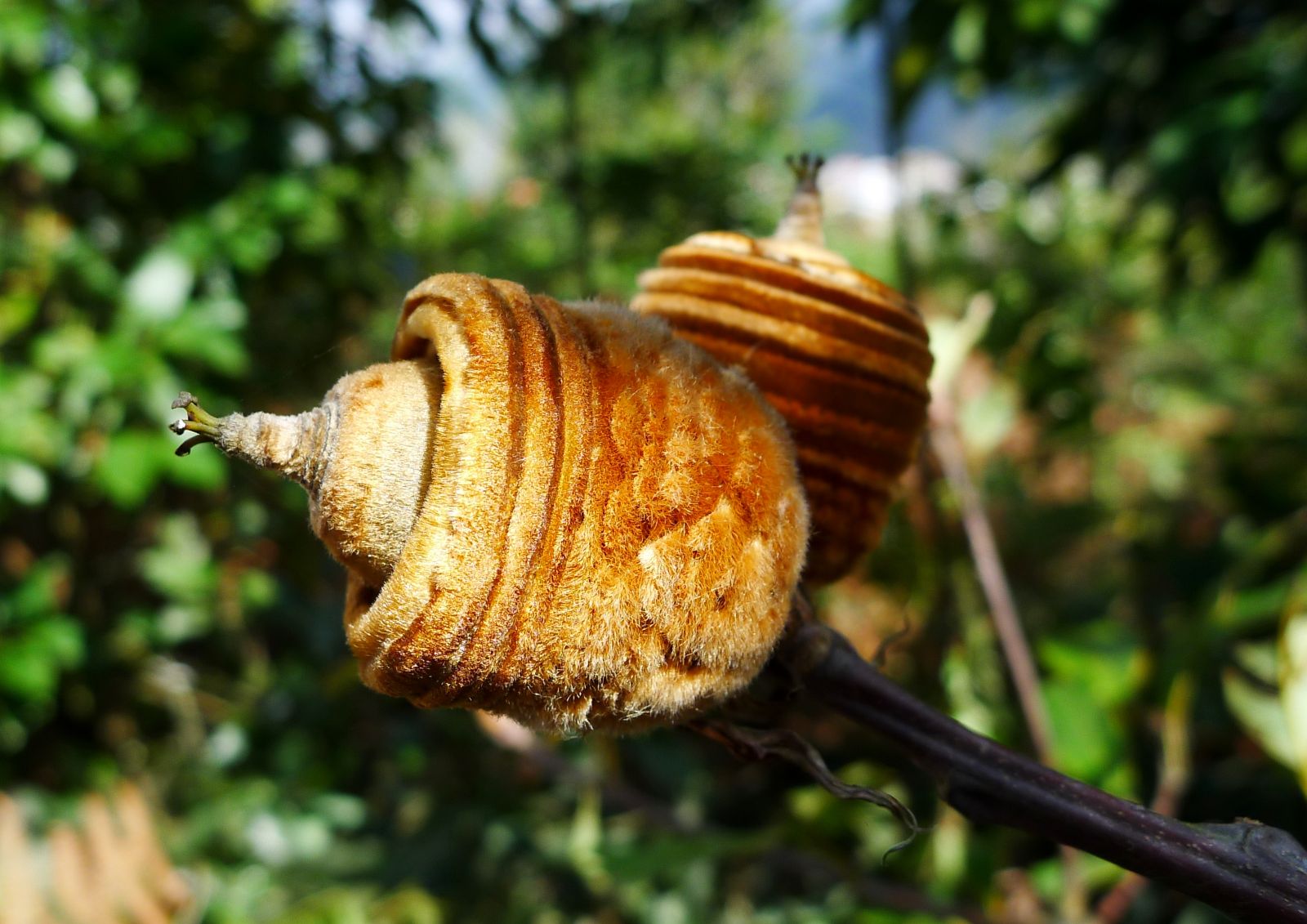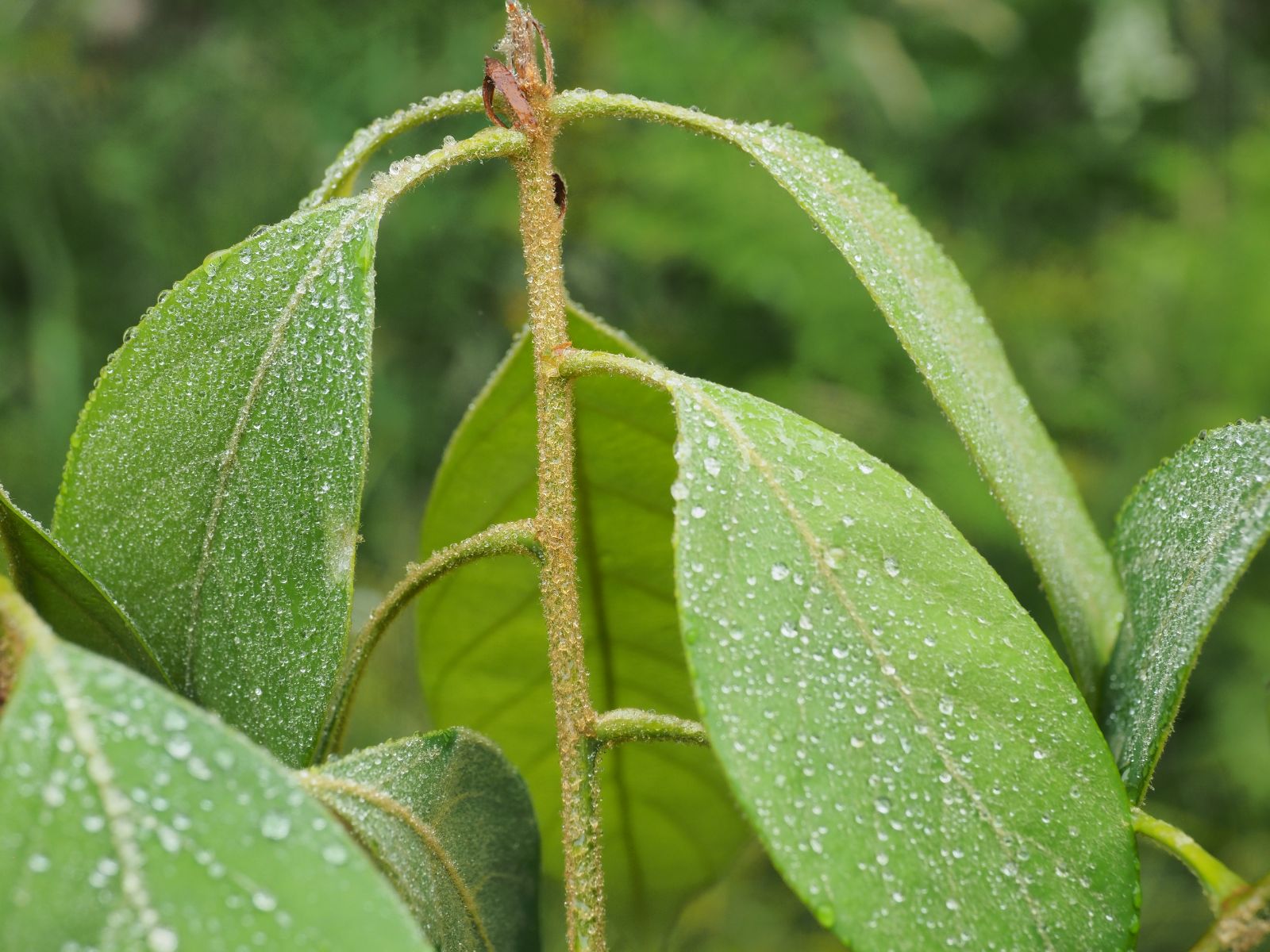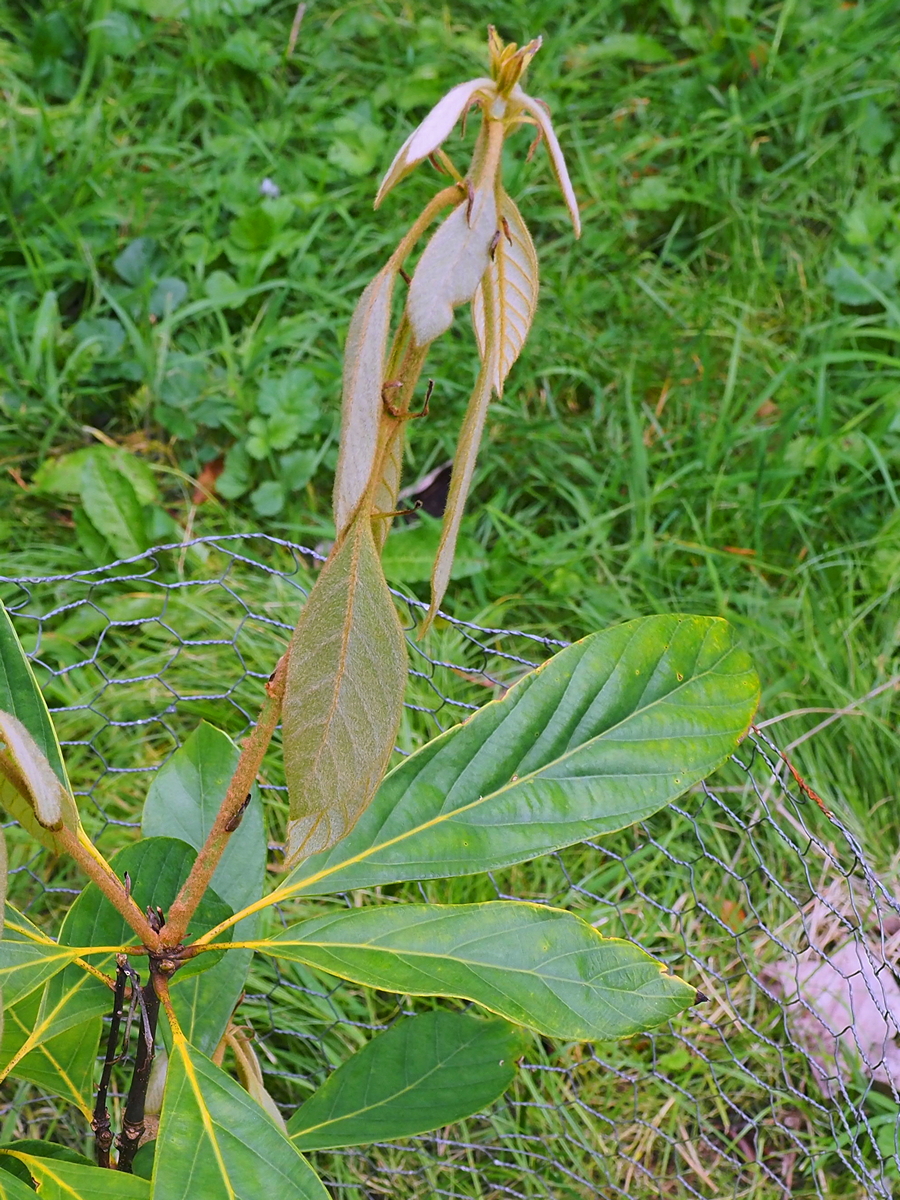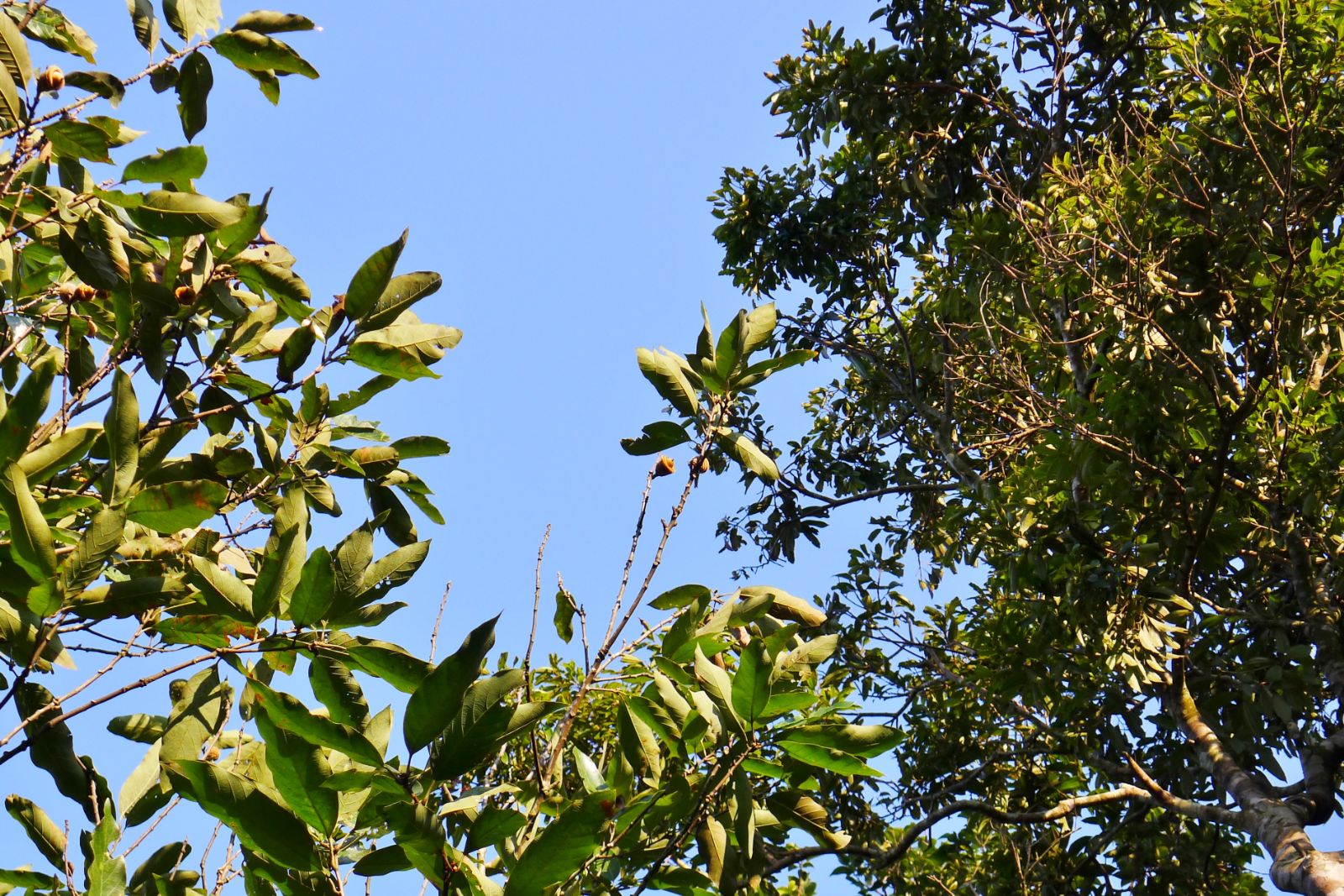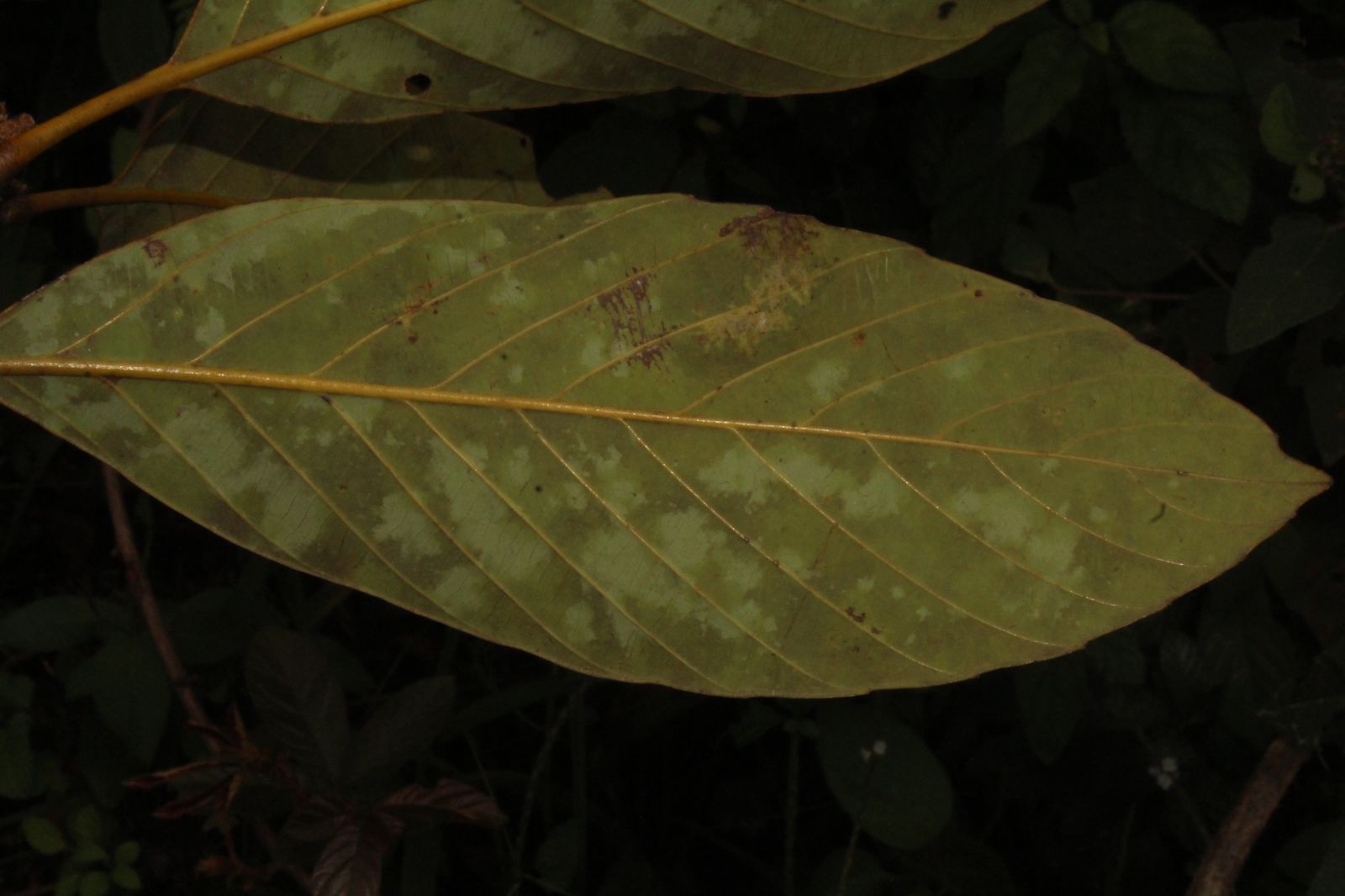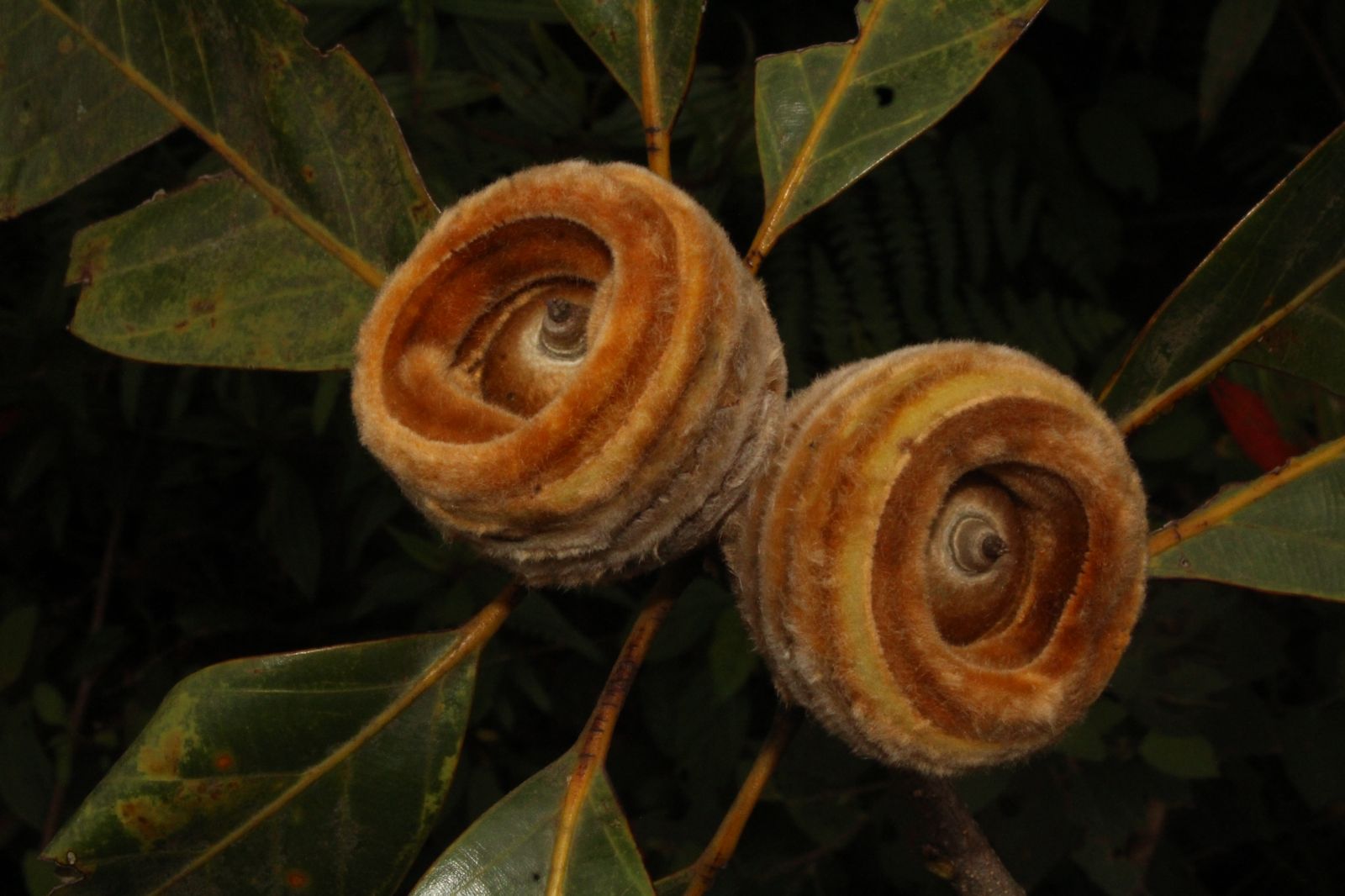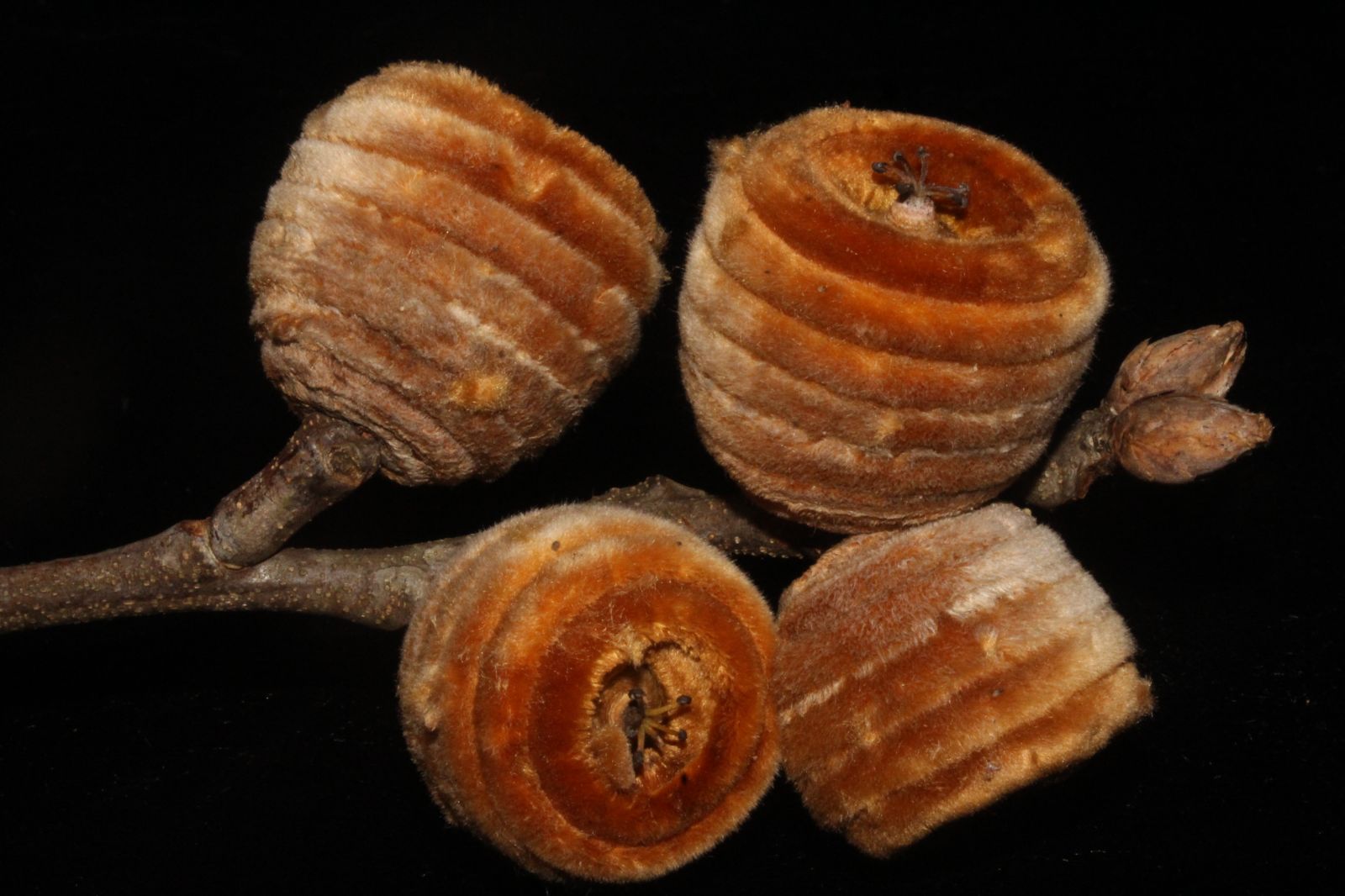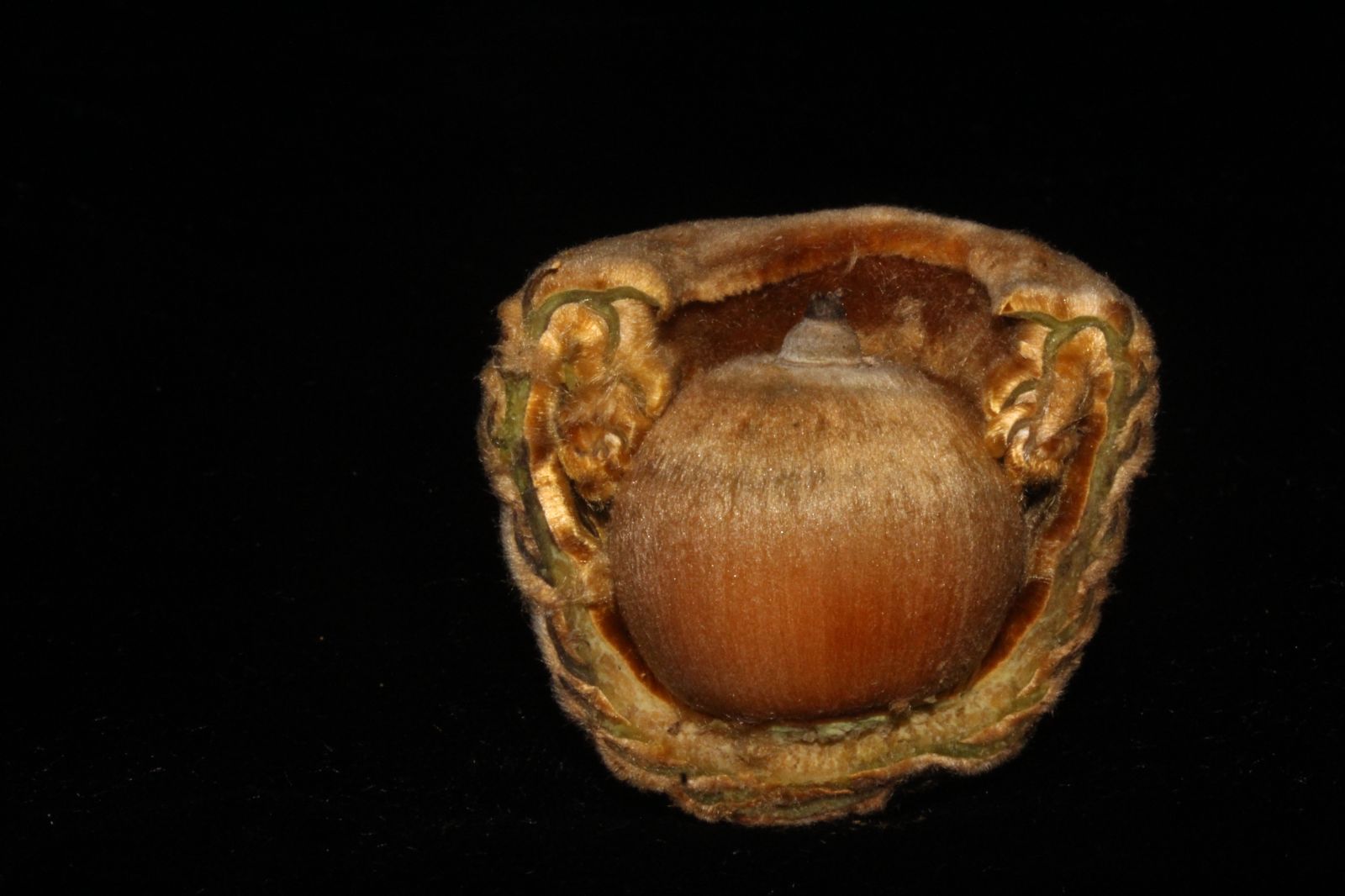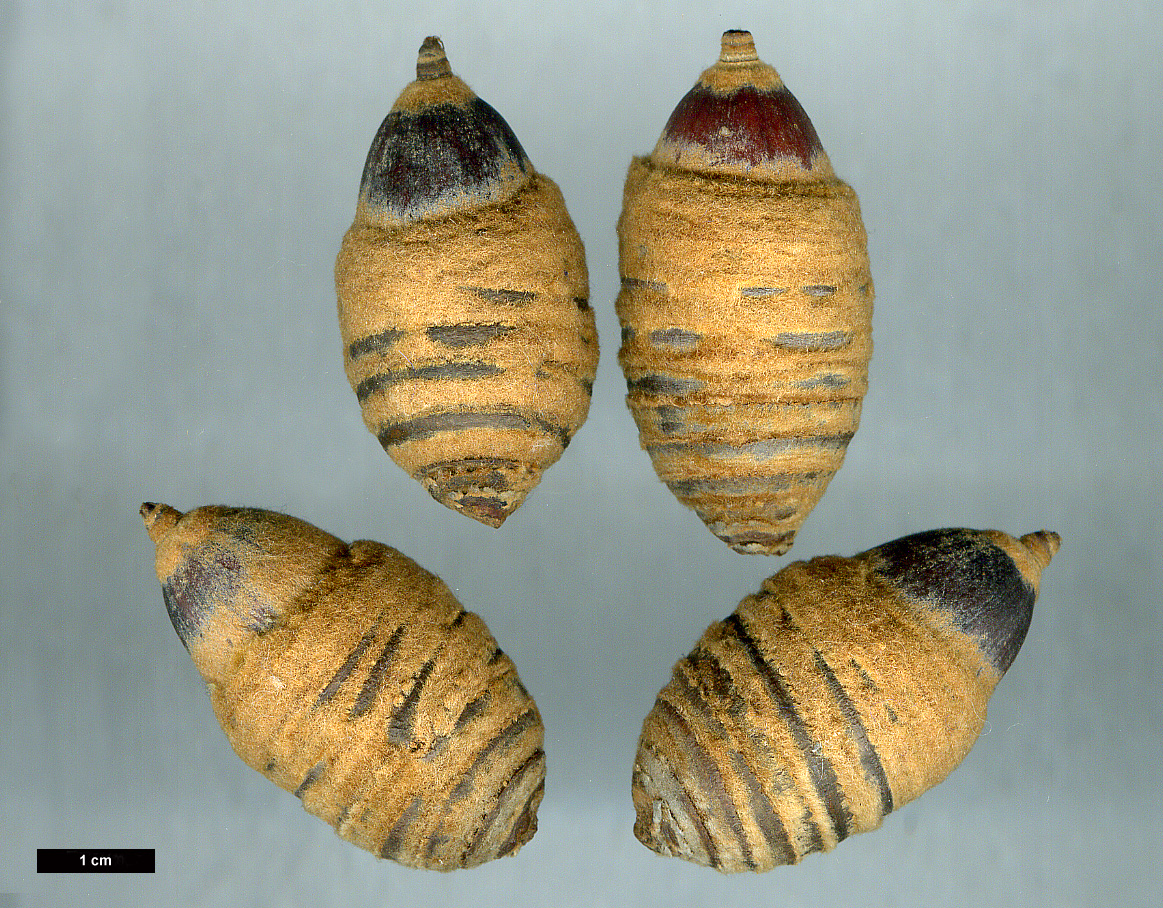Quercus macrocalyx
Sponsor
Kindly sponsored by
The Trees and Shrubs Online Oak Consortium
Credits
Allen Coombes & Roderick Cameron (2022)
Recommended citation
Coombes, A. & Cameron, R. (2022), 'Quercus macrocalyx' from the website Trees and Shrubs Online (treesandshrubsonline.
Genus
- Quercus
- Subgen. Cerris, Sect. Cyclobalanopsis
Common Names
- 饭甑青冈 (fan zeng qing gang)
- Sồi đấu to
- Sồi nón cụt
Synonyms
- Cyclobalanopsis fleuryi (Hickel & A. Camus) W.T. Chun
- Cyclobalanopsis macrocalyx (Hickel & A. Camus) M. Deng & Z.K. Zhou
- Quercus fleuryi Hickel & A. Camus
- Quercus megalocarpa A. Camus
- Quercus tsoi Chun ex Menitsky
Other taxa in genus
- Quercus acerifolia
- Quercus acherdophylla
- Quercus acrodonta
- Quercus acuta
- Quercus acutifolia
- Quercus acutissima
- Quercus afares
- Quercus affinis
- Quercus agrifolia
- Quercus alba
- Quercus aliena
- Quercus alnifolia
- Quercus aquifolioides
- Quercus arizonica
- Quercus arkansana
- Quercus aucheri
- Quercus augustini
- Quercus austrina
- Quercus × auzendei
- Quercus baloot
- Quercus bambusifolia
- Quercus baronii
- Quercus bicolor
- Quercus brantii
- Quercus buckleyi
- Quercus canariensis
- Quercus canbyi
- Quercus candicans
- Quercus castanea
- Quercus castaneifolia
- Quercus cerris
- Quercus chenii
- Quercus chrysolepis
- Quercus coccifera
- Quercus cocciferoides
- Quercus coccinea
- Quercus conspersa
- Quercus crassifolia
- Quercus crassipes
- Quercus delavayi
- Quercus dentata
- Quercus deserticola
- Quercus dolicholepis
- Quercus douglasii
- Quercus dumosa
- Quercus durifolia
- Quercus eduardii
- Quercus ellipsoidalis
- Quercus emoryi
- Quercus engelmannii
- Quercus engleriana
- Quercus euboica
- Quercus eugeniifolia
- Quercus fabri
- Quercus faginea
- Quercus falcata
- Quercus floribunda
- Quercus frainetto
- Quercus franchetii
- Quercus fruticosa
- Quercus fusiformis
- Quercus gambelii
- Quercus garryana
- Quercus geminata
- Quercus georgiana
- Quercus germana
- Quercus gilliana
- Quercus gilva
- Quercus glabrescens
- Quercus glauca
- Quercus graciliformis
- Quercus gravesii
- Quercus griffithii
- Quercus grisea
- Quercus guyavifolia
- Quercus hartwissiana
- Quercus hemisphaerica
- Quercus × hispanica
- Quercus hondae
- Quercus hypargyrea
- Quercus hypoleucoides
- Quercus ilex
- Quercus ilicifolia
- Quercus imbricaria
- Quercus incana
- Quercus infectoria
- Quercus insignis
- Quercus ithaburensis
- Quercus kelloggii
- Quercus × kewensis
- Quercus kiukiangensis
- Quercus laceyi
- Quercus laevis
- Quercus lamellosa
- Quercus lanata
- Quercus lancifolia
- Quercus laurifolia
- Quercus laurina
- Quercus × leana
- Quercus leucotrichophora
- Quercus × libanerris
- Quercus libani
- Quercus lobata
- Quercus lobbii
- Quercus lodicosa
- Quercus longinux
- Quercus longispica
- Quercus look
- Quercus × ludoviciana
- Quercus macranthera
- Quercus macrocarpa
- Quercus macrolepis
- Quercus marilandica
- Quercus mexicana
- Quercus michauxii
- Quercus mongolica
- Quercus monimotricha
- Quercus montana
- Quercus morii
- Quercus muehlenbergii
- Quercus myrsinifolia
- Quercus myrtifolia
- Quercus nigra
- Quercus × numidica
- Quercus oblongifolia
- Quercus obtusata
- Quercus oglethorpensis
- Quercus oxyodon
- Quercus pagoda
- Quercus palmeri
- Quercus palustris
- Quercus pannosa
- Quercus parvula
- Quercus petraea
- Quercus phellos
- Quercus phillyreoides
- Quercus planipocula
- Quercus poilanei
- Quercus polymorpha
- Quercus pontica
- Quercus prinoides
- Quercus pubescens
- Quercus pyrenaica
- Quercus rehderiana
- Quercus reticulata
- Quercus robur
- Quercus rotundifolia
- Quercus rubra
- Quercus rugosa
- Quercus rysophylla
- Quercus sadleriana
- Quercus salicina
- Quercus sartorii
- Quercus × schneideri
- Quercus schottkyana
- Quercus semecarpifolia
- Quercus senescens
- Quercus serrata
- Quercus sessilifolia
- Quercus setulosa
- Quercus shumardii
- Quercus sinuata
- Quercus spinosa
- Quercus stellata
- Quercus stenophylloides
- Quercus suber
- Quercus subspathulata
- Quercus tarokoensis
- Quercus tatakaensis
- Quercus texana
- Quercus tomentella
- Quercus trojana
- Quercus tungmaiensis
- Quercus turbinella
- Quercus × turneri
- Quercus undulata
- Quercus utahensis
- Quercus utilis
- Quercus uxoris
- Quercus variabilis
- Quercus velutina
- Quercus virginiana
- Quercus vulcanica
- Quercus warburgii
- Quercus wislizenii
- Quercus xalapensis
Tree to 25 m, 60 cm diam., bark grey, smooth when young becoming slightly fissured. Young shoots with a dense, orange-brown tomentum, becoming glabrous or nearly so with numerous lenticels. Leaves leathery, oblong-elliptic to slightly obovate, to 20 cm or more long by 8 cm wide, tapered to rounded at the base, abruptly taper-pointed at the apex with up to 15 lateral veins either side of the midrib that are distinctly raised beneath. Margin entire to shallowly toothed or undulate towards the apex. The leaves are densely covered with an orange-brown tomentum when young, becoming glabrous and glossy dark green above, paler or slightly glaucous beneath and sometimes retaining some hairs in the leaf axils. Petiole to 6 cm long, tomentose when young becoming glabrous. Infructescence to 6 cm, very stout and densely tomentose at first. Cupules sessile or nearly so, thick-walled, cup-shaped to cylindrical, to 4 × 4 cm, densely covered in an orange-brown tomentum and with up to 13 rings of scales. Acorns ovoid to ellipsoid, tomentose, to 5 × 4 cm about 2/3 enclosed in the cup and ripening the second year. (Huang et al. 1999; Menitsky 2005; le Hardÿ de Beaulieu & Lamant 2010; Deng et al. 2006)
Distribution China Fujian, Guangdong, Guangxi, Guizhou, Hainan, Hunan, Jiangxi, Yunnan Laos Vietnam
Habitat Humid subtropical mountain forests with Lauraceae and other Fagaceae at 500–1800 m.
USDA Hardiness Zone 9
RHS Hardiness Rating H3
Conservation status Least concern (LC)
This species has one of the most ornamental acorn cups but is not proving very hardy, and these have not yet been produced in cultivation. Chassé (2014), who found this in Vietnam in 2013 with Charles Snyers and Olivier Colin, described it as ‘a stunning tree the young leaves, twigs, and buds of which are covered with a very dense, rusty orange or golden tomentum. The acorns are unmistakable: the distinctly bell-shaped, orange, velvety acorn caps are a sure signature.’
Quercus macrocalyx was introduced to the Sir Harold Hillier Gardens from acorns collected at Guangxi Botanical Institute, China. Plants from this collection are under glass at Kew. It is grown outside at Tregrehan, Cornwall, England where it was planted in 2010 and was about 2 m tall in 2020 (T. Hudson pers. comm.) and at La Bergerette, France (S. Haddock pers. comm. 2020). At Penrice Castle it was 1.5 m in 2021 (T. Methuen-Campbell pers. comm.). There is a plant at Caerhays, England, but this was described as just about still alive in May 2021 with some winter cold damage and has been killed to ground level there at least once (Williams 2021). Tom Hudson also collected it from near Guilin Botanical Garden, Guangxi, China and a plant from this collection is thriving at Gwavas Station in New Zealand where it seems to appreciate the extra heat (T. Hudson pers. comm. 2021). It is also in the collection at Kunming Botanical Garden (S. Weibang pers. comm. 2021).
This species is better known as Q. fleuryi. However, Deng et al. (2006) found that the name Q. macrocalyx had been applied to specimens with unripe fruits and thus relatively smaller and less exserted acorns while Q. fleuryi had been used for those with ripe fruits and larger acorns. The epithet macrocalyx refers to the large acorn cup that the authors described as up to 40 mm long and 48 mm wide. It was described from Trấn Ninh, now Muang Phuan, Laos. Quercus fleuryi was named after French plant collector François Fleury who collected the specimens from which it was described in 1918 from the Ba Vi mountains, northern Vietnam. The common name in Chinese can be translated as ‘rice-cauldron evergreen oak’, in reference to the shape and size of the cupules: 饭甑 (fan zeng) is a traditional pot made of wooden hoops, used for steaming rice and popular in southern China. The epithet macrocalyx means ‘large covering’, from Ancient Greek μακροϛ (macros) = ‘large, long’ + καλυξ (calyx) = ‘seed pod, husk, outer covering’, in reference to the large cupules.

